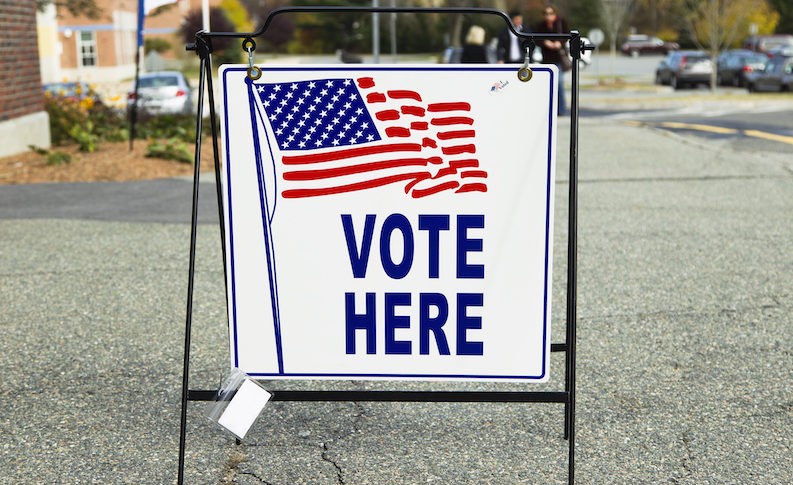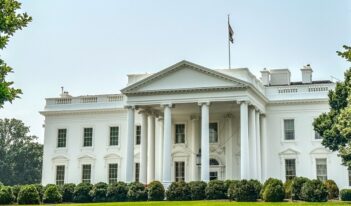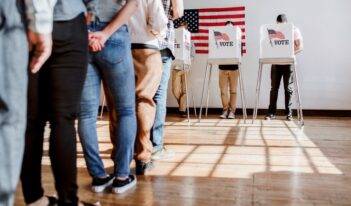
Proposed legislation could change state regulations that allocate presidential electoral votes.
With the 2020 presidential election already beginning to heat up, voters are once again focusing their attention on the Electoral College—the group of electors who cast their presidential votes approximately one month after the national vote takes place in November. The votes in the Electoral College determine the winning presidential candidate.
As a result of the Electoral College system, two of the last three U.S. presidents took office after losing the national popular vote. Not everyone thinks that this is a problem, but those who do have what they think is a solution: the National Popular Vote bill.
The bill is an “interstate compact” that would ensure the presidential election winner is “the candidate who receives the most popular votes” in a national election. States that enter the compact agree to change their election regulations and award all of their electoral votes to the candidate who wins the nationwide popular vote.
So far, 15 states and the District of Columbia have enacted the bill, but the legislation is currently dormant even where it has been adopted. According to the terms of the compact, the change would take effect only if the bill is adopted by states possessing a total of at least 270 electoral votes—the minimum number required to win a presidential election. Until then, each state’s current election regulations will remain in place.
Proponents of a national popular vote argue that the current electoral system discourages presidential candidates from engaging with voters in states whose elections are “a foregone conclusion.” They also contend that “battleground” states whose elections are most competitive consistently receive the lion’s share of campaign attention and federal funding.
The only way to make every vote count, they argue, is to guarantee that the winner of the national popular vote becomes the president.
In contrast, supporters of the current system assert that it preserves the political power of less populated states and regions of the country. A national popular vote, they contend, would encourage candidates to focus solely on densely populated metropolitan areas at the expense of large geographic regions of the country. Advocates also highlight the fact that in more than two centuries of elections, the Electoral College has only elected five Presidents who lost the national popular vote.
Eliminating the use of electoral votes would require a constitutional amendment. But the interstate compact would keep the Electoral College intact—it would only change how current state regulations allocate electoral votes to presidential candidates.
The number of electors for each state matches its number of congressional representatives—two U.S. senators for each state plus the number of members of the U.S. House of Representatives as determined by population. Three additional electors represent the District of Columbia, for a total of 538 electors with 270 votes needed to secure a majority. States range from having three electors to 55.
Electors are chosen differently in each state, but they all pledge to vote for a particular candidate according to a state’s election regulations. Most states allocate their electors using the “winner-take-all” method, awarding all of the state’s electoral votes to the winner of the statewide popular vote. That means that in a state like Florida, which has 29 electoral votes, a candidate who wins only 51 percent of the popular vote would receive all 29 electoral votes.
Only two states—Maine and Nebraska—deviate from this winner-take-all norm. They instead allocate one electoral vote to the winner of each congressional district and an additional two votes to the statewide winner.
The U.S. Constitution established the electoral vote system but gave state legislatures the power to determine how each state would allocate its electors. It specifies that “each state shall appoint, in such manner as the legislature thereof may direct,” its own electors to elect the nation’s President and vice president. State control over electors is as old as the Electoral College itself, and state legislatures have explicit authority to regulate how electors cast their votes.
Since the allocation of electors is a choice made by state legislatures, they can modify it simply by passing new legislation. This is just what advocates of the interstate compact propose. The states that have already adopted the bill possess a total of 196 electoral votes. If states with 74 additional electoral votes adopt the legislation, then the interstate compact will go into effect, guaranteeing that the national popular vote winner would become the next President.



